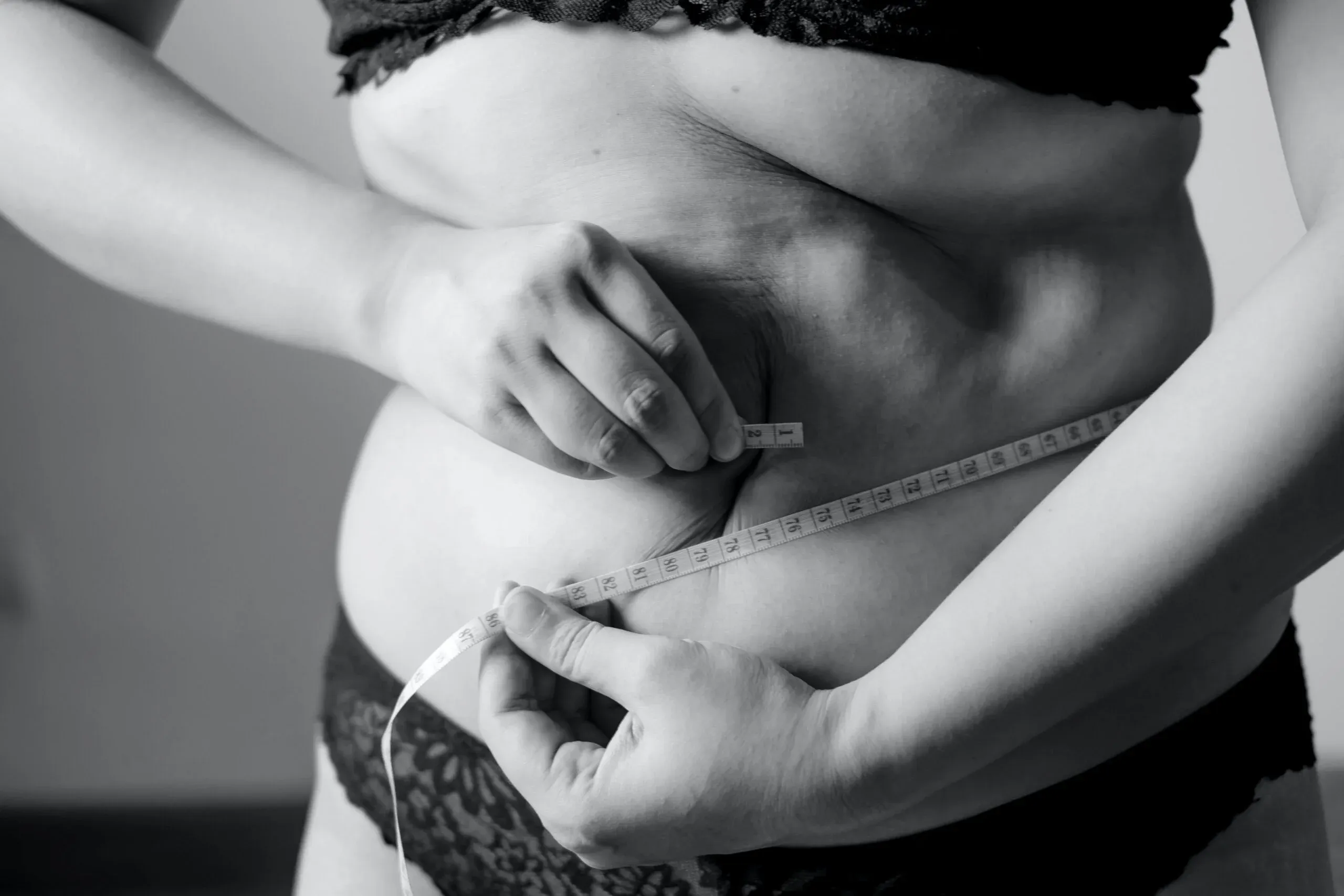Exploring the Evolution of the Body Positivity Movement and Body Neutrality
Body positivity is all about loving and embracing your body just the way it is. This movement challenges beauty standards, celebrates diversity, and promotes self-acceptance and well-being for everyone.

Image Courtesy of Pexels
Published on
2024-07-10
Body positivity is about loving your body as it is. In India, beauty standards have changed from ancient art celebrating fuller figures to Bollywood stars of the 80s and 90s with diverse body types. Today, social media heavily influences beauty ideals, making it hard to escape the pressure to look a certain way. However, social media also supports the body positivity movement, which encourages celebrating all body shapes and sizes. This movement, started by the 1967 "Fat-In" event and the National Association to Advance Fat Acceptance (NAAFA), promotes body inclusivity and self-love.Despite India's traditional beauty standards and societal pressures, body positivity campaigns are crucial, especially after the COVID-19 lockdown increased body image concerns. Critics worry it overlooks health issues, lacks diversity, and focuses too much on appearance. This led to body neutrality, which values the body's functionality over looks. Both movements help people develop healthier relationships with their bodies. Practicing body positivity involves appreciating what your body can do, engaging in self-care, and surrounding yourself with supportive people.
Imagine the possibility of embracing and cherishing your own body wholeheartedly. That's the essence of body positivity. Let's explore what makes this self-empowering movement so inspiring in an Indian setting.
To understand how beauty standards have changed throughout history, look at the art and media of the time.
The voluptuous sculptures of ancient India, like those in Khajuraho and Ajanta, celebrate fuller figures. Traditional paintings showcase royal statistics with their natural body types o aka body-positive versions—Bollywood stars of the 80s and 90s, whose diverse body shapes set trends across the nation. The rise of social media now gives anyone with a smartphone a daily reminder of these constantly evolving beauty standards. It's harder than ever to ignore the pressure to have flawless skin, and the perfect body shape, and to conform to the latest trends.
However, social media isn’t all bad. Platforms like Instagram are fostering a revolution to reshape how people view and treat their bodies: the body positivity movement. Body positivity uses uplifting language and imagery to smash the idea of a single ideal body type, urging you not just to accept your appearance but to celebrate it. The goal? Create spaces where self-love thrives, and negative body image takes a hike — boosting confidence for all.

Image Courtesy of Pexels
Fat Shaming
In 1967, a "Fat-In" event in Central Park was the smackdown that birthed the body positivity movement. A crowd of peeps came together to clap back at fat discrimination, torching diet books and pics of skinny celebs to shout loud and proud that chubby bodies are hella beautiful.
This Fat-In lit the fire for what is now known as the fat acceptance movement, which later gave birth to the National Association to Advance Fat Acceptance (NAAFA). This crew became the holy grail for standing up to fatphobia and fighting for the respect and rights of those with a little extra cushion. They called out discrimination against fat peeps as a straight-up civil rights issue, urging the world to change to a body-positive place.
The fat acceptance movement laid the groundwork for the body positivity movement. The narrative evolved from mere acceptance to a bold celebration of diversity, championing body inclusivity and self-love for people of every shape and size — whether they’re a size 0 or a size 24. In the 21st century, body positivity is intersectional, which means it’s about more than just size. This movement actively promotes body diversity in all its forms, including body hair, physical ability, and self-expression. Within this new culture of acceptance, people can feel valued and represented, regardless of how they align with “traditional” beauty norms. Navigating the world of body positivity in India comes with its own set of challenges.
The traditional standards of beauty here often revolve around being fair-skinned, slim, and having straight hair, leaving a lot of folks feeling left out. On top of that, societal expectations and family pressures can put a damper on self-love vibes. Indian bodies tend to have a bit more to love, with women embracing their curves. But thanks to the media's obsession with one type of beauty, many end up feeling less than great about themselves. To make matters worse, there's a serious lack of empathy in Indian culture that only adds fuel to the fire. Body shaming is so common that it's almost become a national hobby, with loved ones and friends casually throwing shade about weight and looks under the guise of "caring".
Amid the COVID-19 lockdown, a significant number of people faced exacerbated concerns regarding their physical appearance. The limitations and absence of social contact magnified sensations of solitude and self-judgment, especially among females. Research has indicated that women expressed a rise in discontentment with their body image and worries during the lockdown, underscoring the necessity for promoting body positivity campaigns in India.
Criticism of the Body Positivity Movement
Many view the body positivity movement as a good thing, but it’s not without its naysayers. Here’s what critics take issue with.
1. Health Concerns
Critics worry that the rush to embrace every unique body might cause people to overlook potential weight-related health issues. The debate centers around finding the right balance between acceptance and health awareness.
2. Lack of Diversity
While inclusion is a focal point of body positivity, the movement sometimes excludes those who don’t fit within a fair-skinned, able-bodied demographic. Think of “plus-size” models — many are fair-skinned women no bigger than a size L, which limits the entire point of the movement.
3. Focus on Appearance
The movement that’s supposed to be about more than looks often ends up prioritizing physical appearances, ignoring the fact that there’s way more to a person than looks.
 Image Courtesy of Pexels
Image Courtesy of Pexels
Body Positivity versus Body Neutrality
The body positivity movement’s flaws have made way for a new term: body neutrality. While body positivity actively promotes a positive body image, body neutrality encourages people to detach themselves from their appearance, focusing instead on the human body’s strength, resilience, and functionality. This can lead to increased self-esteem and confidence as people learn to appreciate their bodies for what they are rather than how they look.
Both philosophies offer a valid approach to loving and valuing your body, but they go about it in slightly different ways. Body positivity openly (and often loudly!) defies societal standards, advocating for body diversity and inclusivity in society and the media. Body neutrality is all about placing less pressure on self-love and appreciating your body for what it is.
You don’t have to choose between positivity and neutrality. You can practice both at the same time, showing off your body confidence while internally acknowledging that the real power in your physical form is what your body allows you to experience and achieve. This hybrid approach can be an effective strategy for balancing sustainable self-esteem and mental well-being — but it’s up to you to decide what makes you feel best.
7 Ways to Practice Body Positivity
At its heart, body positivity is a powerful tool against mental health struggles related to body image. By challenging unrealistic and narrow beauty standards, this movement helps people of all genders, shapes, and sizes cultivate a healthier relationship with their bodies.
Here are seven empowering ways to boost your mental health and confidence with body positivity:
1. Consider Your Body's Incredible Abilities
Don't just obsess over your looks, but also marvel at all the amazing things your body can do. Instead of being superficial, let's be grateful for the joy of dancing, running, and pampering ourselves thanks to our bodies.
2. Experiment with Health-Centric Self-Care
Dive into intuitive eating, staying active, and getting enough rest. It's all about honoring your body's requirements and boundaries, without getting caught up in appearances. Focus on how your body feels, not just how it looks.
3. Say goodbye to the reign of diet culture
Instead of fixating on calories and shedding pounds, focus on how foods affect your well-being, their nutritional content, and the sheer pleasure of indulging. Munch on a salad because you genuinely fancy it, not because you believe it will magically enhance your appearance.
4. Embrace clothing that uplifts your spirits
Fashion serves as an outlet for self-expression. Opt for ensembles that exude confidence and make you feel at ease, regardless of what's currently in vogue.
5. Embrace and acknowledge the little triumphs along the way
Each stride toward self-acceptance and self-love deserves recognition. Whether it's opting for a meal that truly resonates with your body or facing your reflection in the mirror with a newfound sense of peace, these accomplishments deserve to be cheered on.
6. Indulge in some Self-Love Chit-Chat
Swap those gloomy thoughts with some feel-good affirmations. Remind yourself, “I am amazing,” “I am totally capable,” and “I love myself just the way I am” — and keep repeating them until you fully embrace them.
7. Surround Yourself with the Sunshine Squad
Scroll through social media accounts that lift your spirits and ditch the ones that bring you down. It’s not worth wasting your time on people who don’t add value to your life, whether it's a fitness guru or a toxic friend. Find groups that champion you on and mirror your path to a healthier self-image.
 Image Courtesy of pexels
Image Courtesy of pexels
Body positivity is a powerful movement for improving mental health and body image. Challenging narrow beauty standards helps people of all shapes and sizes embrace their bodies. To practice body positivity, you can focus on what your body can do, engage in self-care, reject diet culture, wear clothes that make you feel good, celebrate small victories, use positive affirmations, and surround yourself with supportive people. Both body positivity and body neutrality offer paths to self-acceptance and well-being, allowing you to find what works best for you.
Enjoyed this post? Discover our audio stories for her pleasure at www.atog.in